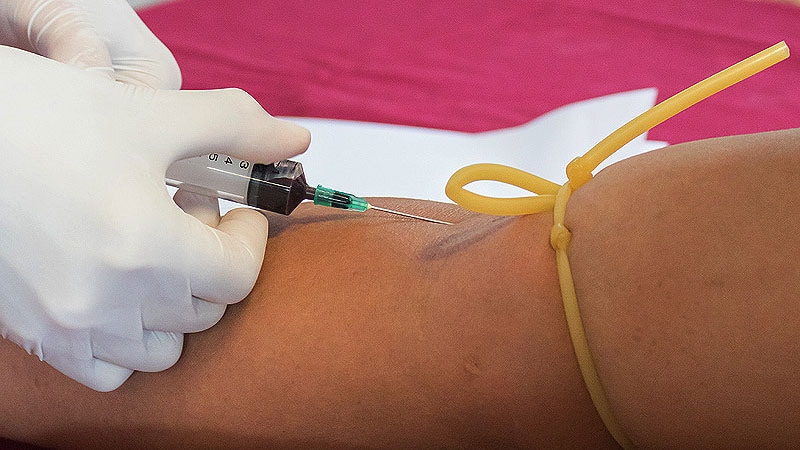The study covered in this summary was published on Research Square as a preprint and has not yet been peer reviewed.
Key Takeaway
-
A risk-stratified approach to using blood-based liquid biopsy tests for early cancer detection may help identify individuals who would benefit most. Understanding the risk-benefit balance of using these tests is important given the low positive predictive value identified in studies evaluating two promising multicancer screening tests — Galleri from Grail and DETECT-A from Thrive.
Why This Matters
-
The development and use of noninvasive, multicancer liquid biopsy tests for early cancer detection could give health professionals a longer window of opportunity to uncover and treat cancer earlier.
-
However, knowing which patients face a greater risk for cancer and may benefit most from these tests is important, given the potential for false-positive results.
Study Design
-
Researchers used data from the UK Biobank study as well as from US population cancer incidence rates to estimate future cancer risk, weighing individuals’ genetic and nongenetic profiles.
-
The team identified the top 10 incident cancer types for females and males with large and publicly available genome-wide association studies.
-
The final analysis involved 160,586 female and 144,718 male participants of White British ancestry aged 40-73, which included 7115 female and 7571 male cancer cases.
-
Polygenic risk scores were calculated for bladder, breast, colorectum, endometrium, kidney, lung, melanoma, non-Hodgkin’s lymphoma, ovary, pancreas, and prostate cancer types.
-
The researchers also factored in two key lifestyle-related exposures — smoking and body mass index.
-
They then computed and assessed the performance of pan-cancer risk scores using a standardized hazard ratio for instantaneous risk and area under the curve (AUC).
Key Results
-
Pan-cancer risk scores were associated with the risk of developing at least one cancer during the follow-up period in females (hazard ratio [HR], 1.39) and males (HR, 1.41).
-
The researchers saw a high level of multicancer risk stratification across multiple cancer types when combining the effects of age, cancer-specific polygenic risk scores, and conventional risk factors.
-
When comparing the 1- and 10-year trajectories across various ages and risk strata, the researchers found a benefit to combining cancer-specific polygenic risk scores and conventional risk factors into the predictive model: the combined model (female AUC, 0.60; male AUC, 0.60) vs the polygenic risk score–only model (female AUC, 0.58; male AUC, 0.58) and the risk-factors–only model (female AUC, 0.55; male AUC, 0.57).
-
The combined model revealed a mean 1-year overall absolute cancer risk of 2.63% in the high-risk group (top 10 percentile) and 0.74% in the low-risk group (bottom 10 percentile) — almost a 4-fold increase.
-
A risk-factors–only model, however, demonstrated less risk stratification between the high- and low-risk groups — 2.34% vs 1.13%, or a 2-fold increase.
-
The projected positive predictive value of the multicancer liquid biopsy tests also varied by an individual’s pan-cancer risk score as well as the diagnostic accuracy of the specific liquid biopsy test.
Limitations
-
Researchers assumed that the reported sensitivity and specificity of a test would be applicable across all age, sex, and risk groups.
-
Researchers included a limited set of risk factors in their multicancer risk-prediction models.
Disclosures
-
This study was supported by the National Human Genome Research Institute, the National Cancer Institute, the Dr. Miriam and Sheldon G. Adelson Medical Research Foundation, the Gray Foundation, and the Commonwealth Foundation.
This is a summary of a preprint research study, “Potential Utility of Risk Stratification for Multicancer Screening with Liquid Biopsy Tests.” The study has not been peer reviewed. The full text can be found at researchsquare.com.
Source: Read Full Article
